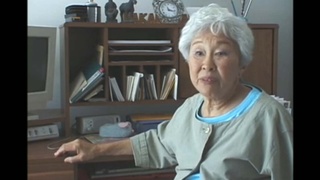Interviews
Being Confused about Racial Identity in Postwar United States
You’re – I’m American, but I was – for years, you know, you wonder. I remember when I got out of camp, then I – when I was going off to school, still, even though it was a few years after – and then I went down South, I didn’t know at first, “Which bathroom am I supposed to go into?” One is for “White,” one is for “Black,” and I thought, “I’m not white, I’m not black, but, you know, during the war, I’m Japanese, I was put into camp. Maybe I should go into the black one.” It was – I don’t remember which one I went into. I know that it was – every time I saw that, I thought, “I really don’t know which one I’m really supposed to go into.”
Date: November 8, 2018
Location: California, US
Interviewer: June Berk
Contributed by: Watase Media Arts Center, Japanese American National Museum






